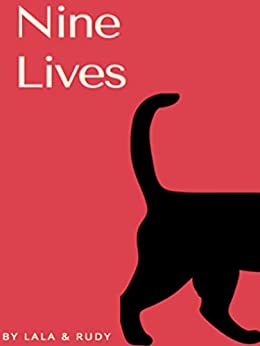9 Lives, 10 Months, 1 Book: How a Chamblee Student Became a Published Author
September 29, 2021

Many Chamblee students enjoy writing: some take writer’s workshop, some join the journalism or yearbook staff, still others participate in extracurriculars like the Literary Magazine club. Chamblee senior Rudraksha “Rudy” Bhukhanwala (‘22) took it a step further, however. As of September 6, his book “Nine Lives” is available for purchase on the Amazon Kindle store.
Co-written with Lelia “Lala” Tolbert, a sophomore at Barnard College of Columbia University, the book was the product of a friendship that began at a camp in 2019 and grew over the course of the pandemic.
“We met at a journalism camp for Vox in the summer of 2019,” said Bhukhanwala. “And we’ve been friends since then and during the quarantine. We weren’t doing anything, we were stuck at home, […] and that’s when we just had the idea of, ‘We’re not doing anything anyways, why don’t we just write a book?’”
The book is a collection of nine chapters, written as journal entries from the point of view of different cats as they observe, remark on, and navigate through human society. The idea for the book grew out of the pandemic, when Rudy and Lala would engage in long conversations to pass the time.
“We would be talking, like on a FaceTime call, and we [would end up talking about] the meaning of being human, and morality, and what makes human ‘human,’” said Bhukhanwala. “We wanted to look at humans from another point of view, not how we see humans but how an outsider would see humans. And then, one of us suggested that we do it from animals’ point of view.”
The book juxtaposes lighthearted pop culture references and day-to-day animal stories with deeper commentary on life, death, and everything in between to create a unique social commentary.
“We wanted to have it be from the point of view of cats, but they themselves don’t know that what they’re saying is deep,” said Bhukhanwala. “They’re just ranting. It’s a journal entry—there are nine journal entries. They’re just ranting, and then from those rants, there are some comical moments they experience, and from those experiences, you can make out something that’s actually very profound, and something that is a deeper understanding.”
Bhukhanwala and Tolbert’s shared interest made the initial writing a breeze. The editing, on the other hand, took longer.
“The writing part was the easy part,” said Bhukanwala. “Because, Lala and I, we like writing, so we just took about a month to write the book. But the editing was a pain, going back in, and reading it multiple times and then editing it.”
Adding complication to the process was their return to school for the 2020 school year, as even despite the freedom afforded by virtual school, finding time to edit was difficult.
“We took about nine months on and off to edit it,” said Bhukhanwala. “The editing process was very hectic because we started school as soon as the editing started, so we only met like once every two months. And then every time we met we had to read it again. So that was a bit of a long process.”
From the beginning, however, Bhukhanwala and Tolbert didn’t have any hard plans to publish their work.
“We didn’t give ourselves a hard deadline, we didn’t even know we wanted to publish the book or anything,” said Bhukhanwala. “We were just writing it for fun, so it was just like, we may write three chapters at once, or sometimes we’d go a week without writing a single chapter. [We wrote] whenever inspiration struck.”
The plan to publish the book didn’t fully form until after the book was written. When asked how he viewed the book’s potential over time, Bhukhanwala discussed how bringing his characters together shifted his plans.
“I would say, when we wrote the last chapter and we connected all the chapters at once, connected all the different cats, and made it into a sort of mini universe—that’s where it stuck out, like, ‘This is more than just a collection of short stories, it can actually be a solid book,’” said Bhukhanwala.
Publishing the book was straightforward, but it came with some downsides.
“[The publishing process] was actually pretty seamless,” said Bhukhanwala. “The only problem we encountered is that it’s not a money making process. […] We didn’t have it copyrighted, so we can only earn up to 35% of the profit—65% goes to Amazon. But then again, we’re not doing it for the money. We just wanted the book to be available for readers. So I think [Kindle] Direct Publishing […] was very seamless.”
What started as a fun quarantine project is now a published book, and Bhukhanwala hopes to get it in the hands of as many readers as he can.
“I think if you are a passionate reader and if you enjoy books that are a little bit of an experiment, outside of the box, I would really recommend that you consider purchasing it,” said Bhukhanwala. “It means a lot.”










